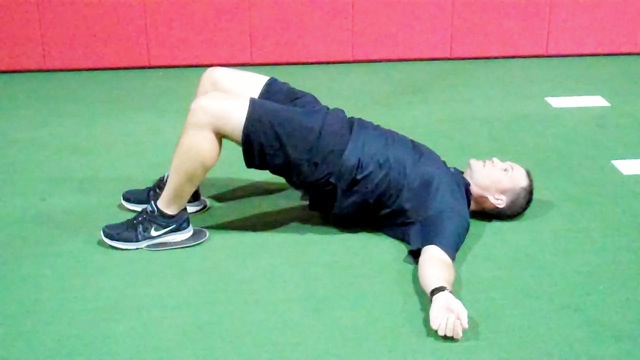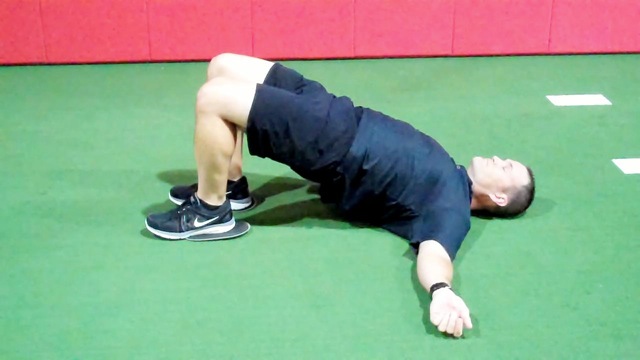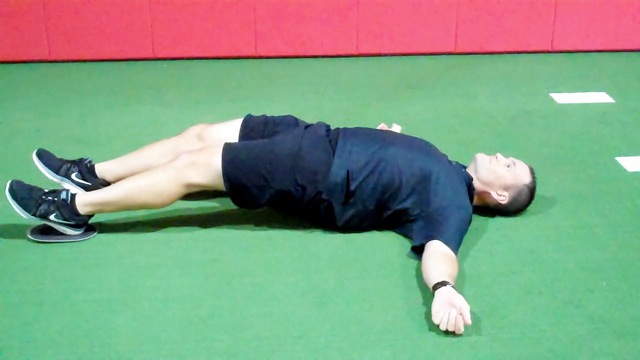
Most clients are in need posterior chain strengthening to resolve muscle imbalances and improve performance. For example, an ideal quadriceps to hamstring ratio is 3:2, yet many female athletes tend to be closer to 2:1. The hamstrings are critical for knee injury prevention. In regard to performance, increasing hamstring strength will facilitate greater speed and power, as well as improve running economy.
Execution:
Execution:
|
|
|
Application:
Using the sliders will allow the client to focus on eccentric strengthening under control in a closed chain manner, as well as work on concentric pull through on the return motion. This is very effective for runners/athletes seeking more speed, power or hamstring strength. It is also suited well for ACL rehab and injury prevention. The eccentric phase is challenging, but an excellent way to facilitate maximal force generation under stretch with body weight.
Initially, clients should begin with small amounts of sliding to ensure they can maintain good form and not strain the hamstrings. Be sure to observe asymmetrical loading or compensations - they may appear in the presence of gross weakness, pain or poor motor control. The eccentric phase will present the most problems for most.
Precautions:
For clients recovering from hamstring strains or experiencing low back pain, proceed with caution. If clients complain of mild strain or increasing tightness, reduce the range of motion with the sliding. If a client masters this exercise, you may consider a single leg (alternate slide version). However, progressing to a single leg version should be reserved for experienced high-level clients with sufficient strength/stability, no dysfunction or recent soft tissue injury.
Brian Schiff, PT, CSCS, is a licensed physical therapist, respected author and fitness professional. Currently, he serves as the supervisor at the Athletic Performance Center in Raleigh, NC. Brian presents nationally at several professional conferences and seminars on injury prevention, rehab and sport-specific training. For more cutting edge training information, subscribe to his monthly Training & Sports Medicine Update at www.BrianSchiff.com.
 Position two sliders beneath the feet in a supine position with the feet flat on the ground and knees at 90 degree bend. Next, bridge up and slowly allow the feet to slide away from the body moving toward full knee extension.
Position two sliders beneath the feet in a supine position with the feet flat on the ground and knees at 90 degree bend. Next, bridge up and slowly allow the feet to slide away from the body moving toward full knee extension. Continue as far as possible while still maintaining hip extension (no contact with the floor) and allowing the heels to take all of the load.
Continue as far as possible while still maintaining hip extension (no contact with the floor) and allowing the heels to take all of the load. Pause at the bottom just prior to losing control and slowly flex the knees bringing the heels back up until you reach maximum knee flexion and hip extension. Repeat this sequence for 8-10 repetitions. Perform 2-3 sets using a cadence of 3/1/2 or 3/1/3 to ensure smooth movement and proper form.
Pause at the bottom just prior to losing control and slowly flex the knees bringing the heels back up until you reach maximum knee flexion and hip extension. Repeat this sequence for 8-10 repetitions. Perform 2-3 sets using a cadence of 3/1/2 or 3/1/3 to ensure smooth movement and proper form.














